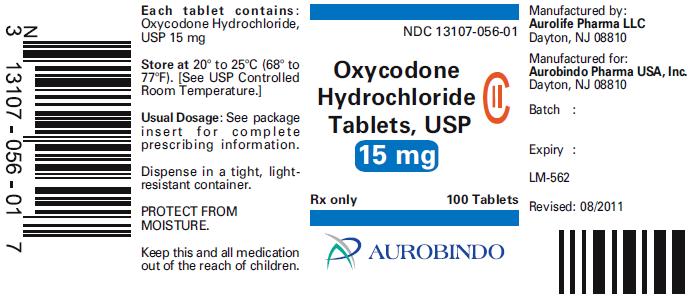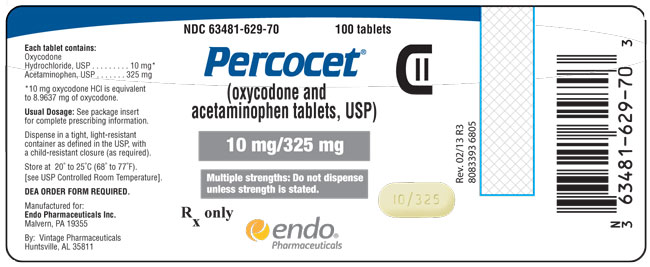Contents
What is Oxycodone?
Oxycodone is a Generic name for an opioid pain reliever drug that is used to treat moderate to severe pain. This drug belongs to the group of controlled substances, which means that it can be taken only by doctors close supervision.
It is available in the form of immediate release tablets and capsule, extender-release capsules in doses of 5, 10 15, 20, 40 and 80 mg and in the form of solution. Extended-release capsules are used only for around-the-clock treatment of pain. This form should not be used on an as-needed basis for acute pain.
What is Percocet?
Percocet is a Brand name for an opioid pain medicine that contains combination of oxycodone and acetaminophen as active ingredients. Oxycodone is opioid/narcotic drug that is used for the treatment of moderate to severe pain.
In this mixture, Acetaminophen is used as a less potent pain reliever that increases the effects and decreases unsafe high doses of oxycodone. Percocet is available in tablet form in following doses: 2.5 mg/325 mg, 5 mg/325 mg, 7.5 mg/325 mg, 10 mg/325 mg.
Are Oxycodone and Percocet the same thing?
No, they are not the same. Oxycodone is generic drug and active ingredient, while Percocet is a Brand name drug that is made also from oxycodone, but it also contains acetaminophen which is added in order to increase oxycodone effect and reduce its unsafe high doses. So, Percocet is little stronger than Oxycodone, it works longer and may work better.
Also the doses of narcotic drug are reduced in Percocet, so there is a bit less chance to cause serious side effects, withdrawal symptoms, addiction and overdose. However, in patients who have some liver disease Percocet is never recommended. Both active ingredients are metabolized in the liver, so it may be too hard for the liver to metabolize both drugs, and also acetaminophen is known as hepatotoxic drug if it is taken in high amounts.
How Oxycodone and Percocet work in the body?
Oxycodone works as a weak agonist at mu, kappa, and delta opioid receptors in the CNS. Oxycodone primarily binds to opioid mu-type receptors that are coupled with G-protein receptors and function as positive or negative modulators of synaptic transmission through G-proteins that in last step activate effector proteins. Binding of oxycodone to its receptors stimulates the exchange of GTP for GDP on the G-protein complex.
By inhibiting adenylate cyclase oxycodone decreases intracellular levels of cAMP. Consequently, it inhibits the effects of pain transmission neurotransmitters such as substance P, GABA, dopamine, acetylcholine, and noradrenaline. Oxycodone may also inhibit hormone release of vasopressin, insulin, somatostatin and glucagon.
Oxycodone closes N-type voltage-operated calcium channels by activating kappa-receptor and open calcium-dependent inwardly rectifying potassium channels by activating mu and delta receptors. This result is hyperpolarization of neural membrane and reduced neuronal excitability.
Acetaminophen is a selective COX-2 inhibitor that inhibits synthesis of prostaglandin. It can also inhibit COX-2 in Central nervous System. This drug also acts on the hypothalamic heat regulating centers to produce antipyresis. Acetaminophen’s reactive metabolite N-acetyl-p-benzoquinone imine (NAPQI) can cause a very serious and potentially fatal, hepatic necrosis via processes of lipid peroxidation if it is overdosed (taken of more than 4g daily).
Clinical efficacy and safety of oxycodone/acetaminophen combination
Relevant studies have found that combination of NSAID’s such as acetaminophen and aspirin with opioid drugs such as hydrocodone, oxycodone and codeine obtain better analgesic effects compared to double higher doses of opioids drugs alone. The best results were given on animal models.
However, not all of the NSAID’s potentiate oxycodone’s antinociceptive activity. For example, same effects have not been noticed for ibuprofen and oxycodone combination. No studies were found non-additive analgesic interaction between oxycodone and acetaminophen. Also, studies had been reviled that low doses of oxycodone and acetaminophen 2.5/325 mg and 5mg/325 mg are much safer than double doses of oxycodone alone.
Oxycodone and Percocet side effects
Most common side effect that these medicine may cause include:
- Nausea and vomiting
- Headache
- Constipation
- Dizziness
- Drowsiness
- Lightheadedness
- Weakness or lack of energy
- Dry mouth
- Severe itching
- Trouble falling or staying asleep
- Sweating
If these side effects are mild, they will probably go away within a few days or a couple of weeks. If they’re more severe or don’t go away, patients should talk with their doctor or pharmacis immediately.
Serious side effects that may happen in not so common cases include:
- Serious breathing problems that may lead to respiratory depression such as: slowed breathing, very shallow breathing, fainting, dizziness and confusion
- Seizures
- Low blood pressure
Symptoms of Physical dependence (addiction) and withdrawal may include:
- Irritability or anxiousness
- Restlessness
- Increased blood pressure
- Trouble sleeping
- Fast heart rate
- Fast breathing rate
- Teary eyes
- Dilated pupils (enlargement of the dark center of your eyes)
- Yawning
- Runny nose
- Nausea, vomiting, and a loss of appetite
- Sweating
- Diarrhea and stomach cramps
- Chills
- Muscle aches and backache
Oxycodone abuse or addiction symptoms may include:
- Taking the drug regularly even if you don’t need it
- Taking more of the drug than your doctor prescribes
- Continuing to use the drug despite negative reactions from friends, family, your job, or the law
- Taking the drug secretly or lying about how much you’re taking
- Ignoring regular duties of your life
Who should avoid Percocet and Oxycodone?
- Patients with lung disease or breathing problems: Oxycodone can slow down respiration or cause you to have shallow breathing. Patients with asthma or chronic obstructive pulmonary disease must avoid these drugs. Certain patients should never take oxycodone such as patients with acute asthma attacks and those who already have slow or shallow breathing, or who have too much carbon dioxide in their blood due to poor breathing.
- Patients with liver disease: As a result of liver issues, more of a drug will stay in your body for a longer time. This raises your risk of side effects. It can be very serious if Percocet is taken, because acetaminophen is very dangerous for the liver due to its hepatotoxic metabolites. Such patients should never take Percocet.
- Patients with gastrointestinal problems: Oxycodone may worsen existing stomach or bowel issues. This is because this drug makes it harder for food to move through your digestive tract. Patients with GI obstruction should never take extended-release oxycodone. The immediate-release forms may be used cautiously.
- Patients with kidneys problems. Patients with kidney issues have to avoid these drugs, because low kidney function may increase the levels of oxycodone in your body and cause more side effects. These drugs may also decrease your kidney function, making your kidney disease worse.
- Patients with epilepsy. Oxycodone may cause or worsen seizures in some not so common cases.
- Patients with adrenal gland issues. Patients with Addison’s disease should talk with their doctor about whether these drugs are safe for them. Oxycodone and Percocet may make their condition worse.
- People with hypothyroidism and low thyroid function. Oxycodone could make your condition better or worse.
- People with pancreas and gallbladder problems. Oxycodone and Percocet raises the risk of pancreatitis. Patients with acute or chronic pancreatitis should avoid these drugs. If you have a history of pancreatitis or gallbladder problems, you’re at higher risk of acute pancreatitis.
- Pregnant women. These drugs should be avoided during pregnancy; they should be never taken without doctor advice.
- Mothers who are breast-feeding. Oxycodone may pass into breast milk and may cause side effects in a child who is breast-fed. These drugs should be avoided during breastfeeding.
“Is it safe to mix oxycodone and aspirin?“
“Can you take oxycodone and hydrocodone together?“
“How long is suboxone detectable in saliva?“


